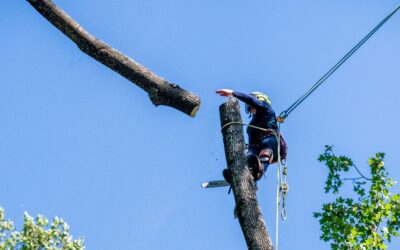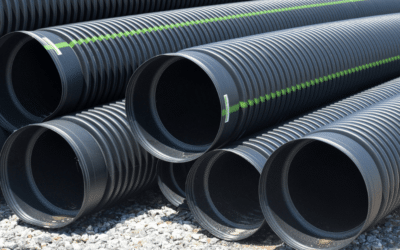Blog Topics
Summer lawn problems are common in Fairfax and Loudoun Counties in northern Virginia. If you have a lawn, chances are you’ve seen at least one of the following symptoms:
- overall browning or “off” color
- dead patches in the lawn
- thin coverage in some areas
- lots of weeds
- holes and dirt cones in the lawn
We’re often asked why lawns look so bad in summer, what causes the problems, and what you can do to keep your turfgrass looking its best through the summer heat. In this article, we share details on:
- signs to watch for that indicate your lawn is stressed (and, therefore, more susceptible to problems)
- reasons why northern Virginia lawns are stressed in summer
- common lawn problems, including symptoms and treatment for fungal diseases, insect pests, weeds, and irrigation issues.
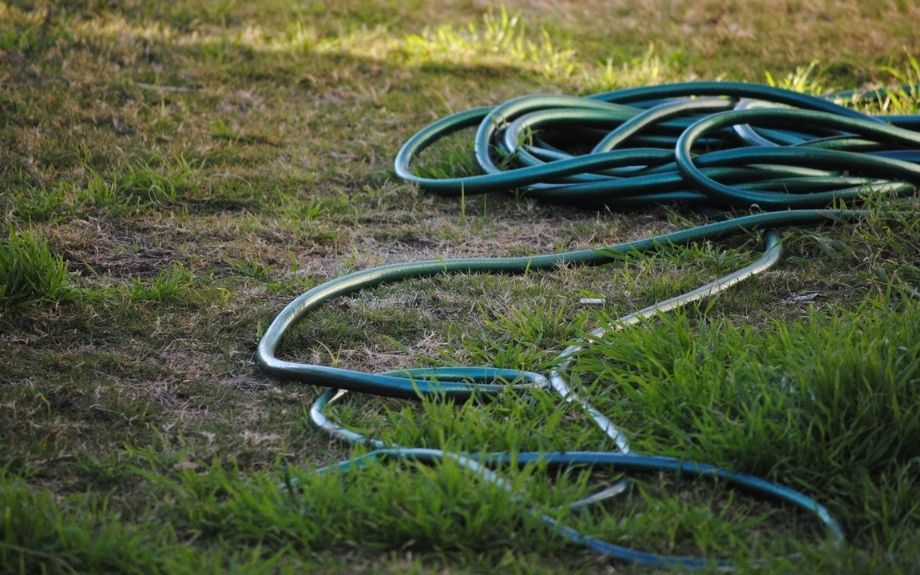
Signs That Your Lawn is Stressed
A Browning Lawn
If the color of your summer lawn looks yellow, brown, or just “off,” you may be seeing water stress. Depending on the type of grass lawn you have, your lawn may turn dormant during hot weather and dry conditions.
Areas of Dead Grass
When you see scattered areas of brown or dead lawn, it’s a clue that you’re seeing something other than water stress. Dead patches often indicate that your lawn is stressed from a fungal disease.
Thin, Patchy Grass Growth
Several things can cause your grass to struggle. Common issues include compacted soil, areas that are shaded by trees or shrubs, and even poor mowing techniques.
Weeds Taking Over
When your lawn is growing weeds instead of grass, it’s because your grass can’t grow vigorously enough to out-compete the weeds. This can be from mowing your lawn too short or from poor growing conditions.
Disturbed Areas of Soil
Does your lawn look like carpet that’s been ripped up? Blame raccoons and skunks. These nocturnal roamers dig up grass and soil to find grubs that live beneath your lawn. Unfortunately, they leave a mess behind.
Why Northern Virginia Summers Can be Hard on your Lawn
Long, hot summer days and rapid growth can be hard on your turfgrass. Here are some reasons why summer living isn’t easy for your lawn.
Lack of Water
Water stress is the most common reason your lawn struggles in summer. The combination of high evaporation rates and thirsty grasses means that your lawn will dry out faster than you think.
Irregular or Uneven Irrigation
If your lawn gets too little water or goes too long between watering, it will struggle to grow in summer. Cool-season lawns will respond by going dormant until they’re sufficiently irrigated.
Poor Lawn Maintenance
Are you over-mowing your lawn? If you cut your grass too short, too often, you’re stressing your lawn. When you reduce the number of green blades that photosynthesize, you’re reducing your lawn’s ability to grow and speeding up how fast its roots dry out.
If your mower blades are dull, you’ll tear your grass blades, instead of neatly cutting them. Dull blades will leave ragged edges that turn brown, giving your lawn a dull appearance. Plus, they can yank out newly planted grasses whose roots haven’t yet grown deep.
Too Much Fertilizing
When you add nitrogen fertilizer to your lawn, you’re telling it to grow – fast. At the right time of year and in the right amounts, nitrogen fertilizers can do wonders for your lawn. But when you add too much, especially in summer, you can burn your lawn – in more than one way.
Most granular fertilizers react to wet grass by drawing water from the blades. This leaves your grass blades with dry, brown tips and edges.
When your lawn grows too fast, it can outrun its irrigation rate and die from water stress. New grass blades are fragile and rushing their growth during the hottest part of the year can be fatal.
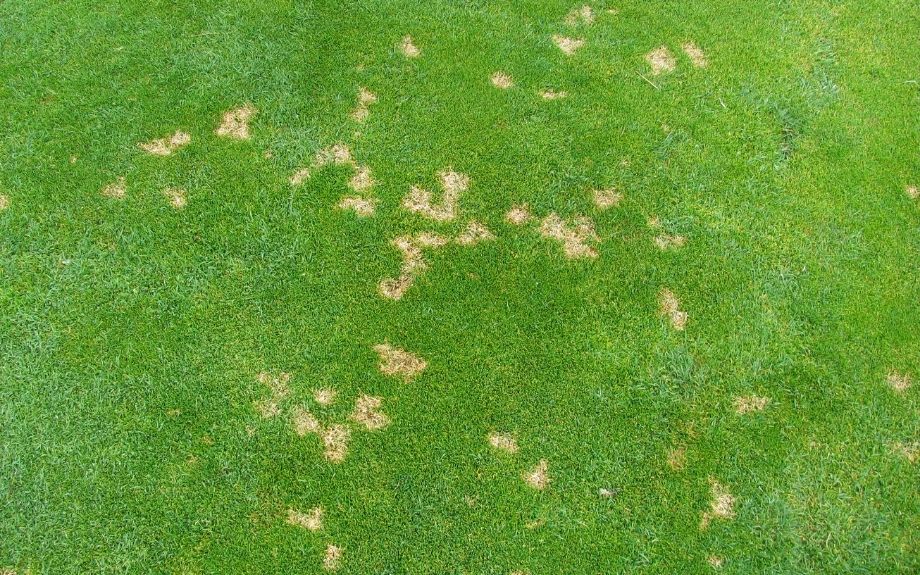
Common Summer Lawn Problems in Northern Virginia
A stressed lawn is vulnerable to insect attacks and diseases. Below, we’ve listed the most common reasons for summer lawn damage in our area.
Fungal Diseases
The combination of high temperatures and high humidity from irrigation makes ideal conditions for fungal disease growth. The most common fungal diseases of lawns in northern Virginia are:
Red Thread Disease
This fungus doesn’t kill your grass but will turn it red. You’ll see it from spring to early fall until temperatures drop. Treat with a fungicide and make sure your lawn isn’t overwatered. Each treatment lasts about a month, so you may have to apply a fungicide several times during the growing season.
Dollar Spot
If you have a healthy, green lawn but see round spots of yellowing grass appear, it might be a dollar spot. Like red thread disease, dollar spot grows in hot, moist conditions in spring and summer.
The best prevention is to avoid over-mowing your grass, keep it appropriately fertilized, and not to overwater.
Water your lawn early in the morning so that any remaining water can evaporate during the day. Don’t water in the evening, as this creates ideal fungus growing conditions.
Brown Patch
As its name suggests, brown patch disease makes irregular areas of yellowing or brownish grass in your lawn.
Treat this like other fungal diseases that thrive in hot, humid conditions: fertilize regularly, don’t overwater, and use a fungicide to stop the spread.
PRO TIP: A well-aerated lawn is less likely to become waterlogged and will have better drainage and stronger roots, so be sure you’re aerating your lawn regularly.
Drought Stress
Chronic underwatering during hot weather will keep your lawn in a constant state of water stress, and your cool-season lawn may go dormant in summer.
This is a natural response and one that you can avoid by giving your lawn:
- Consistent, even irrigation that reaches the roots
- Regular fertilization (without going overboard)
- A good mowing schedule that keeps turfgrass tall enough to shade its roots (not too much at once or too short)
The good news is that a dormant cool-season lawn will regrow after water stress. On the other hand, a dead lawn won’t. That’s one reason why it’s important to know what kind of turfgrass your lawn is composed of.
Overwatering
It’s important to remember that water stress can result from both over-and underwatering, so before you turn up the irrigation, check your lawn’s moisture level.
The root system of the average lawn grows to a maximum depth of around four inches, and it can become waterlogged as well as dry. Make sure your irrigation system is running on a cycle that:
- Gives your grass enough moisture each week, relative to changing temperatures
- Does not cause runoff during a cycle by spraying more water than the soil can absorb, and
- Is not over-saturating the soil and “drowning” the lawn’s roots.
Common Insect Pests That Attack Lawns
If you have insects attacking your lawn, chances are that they are one of the following:
White Grubs
Grubs are small, white insect larvae, and they spend their larval stage in the soil beneath your lawn. They eat the tender roots of your grass before they turn into beetles when they fly up to mate.
You can treat grub infestations with a systemic lawn pesticide that kills larvae when they eat roots.
It’s important to remember that this works only if you treat your grass when the grubs are young and eating. Otherwise, the treatment will do no good.
Armyworms
These worms are moth larvae, and they chew up your grass blades. They’re 1-2 inches long, striped, and crawl together in groups.
You’ll see small patches of dead grass, and then notice birds poking around in your lawn. Armyworms also attract raccoons, skunks, and rodents, who will tear up your lawn as they search for larvae.
You can treat armyworms with granular or liquid pesticides that are labeled to control these pests. Be careful though, as many pesticides are also toxic to beneficial insects.
Webworms
Webworm larvae stay near your lawn’s roots while they eat grass blades. You’ll see brown areas appear in your lawn, with chewed down grass blades. Over time these areas will enlarge and may merge.
Pesticides applied to the lawn will help control an infestation.
Chinch Bugs
These 1/4” long insect pests pierce your grass blades to suck out leaf juices. As with other lawn pests, you’ll first see small areas of damage, then larger ones.
The best prevention for infestations is to keep your lawn sufficiently irrigated and dethatched, as these two practices will keep chinch bug populations at a manageable level.
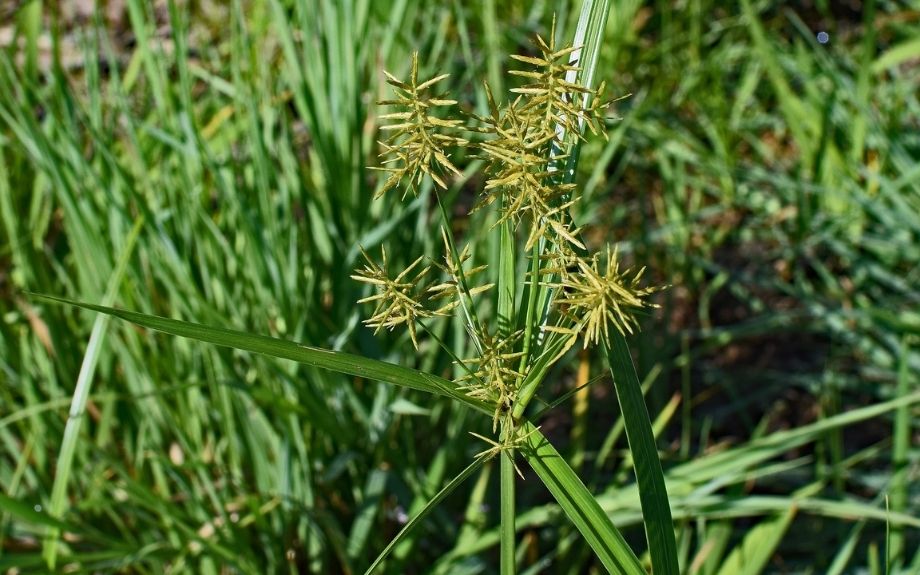
Common Lawn Weeds
Weeds in your lawn can be hard to eradicate. Two of the most common lawn weeds you’ll find are ground ivy (actually a plant in the mint family) and nutsedge, one of many species of invasive sedges that cause problems around the world.
Ground Ivy
This invasive plant likes shade, high moisture, and low fertility. Since these same conditions cause lawns to struggle to grow, a good starting place is changing how you maintain your lawn and where it’s located. Some spots just aren’t meant to have lawns.
This approach is the most sensible, as ground ivy is hard to eradicate, and herbicide treatments are temporary.
Nutsedge
This grass-like weed thrives in hot conditions and will quickly outgrow and outcompete your lawn. Yellow nutsedge (Cyperus esculentus L.), the most prevalent type in Virginia, looks like patches of grass that are growing far more quickly than the rest of your lawn. It spreads underground through rhizomes and tubers, making it almost impossible to eradicate by hand-pulling.
Tackling nutsedge involves applying herbicides to the lawn as early in summer as possible. You may need more than one application over the growing season to gain control. The later you leave it, the less effective the herbicide will be. Plus, nutsedge starts producing seeds later in the season, creating a whole new crop for next year.
We’re Here to Help With Your Lawn Problems!
Whether your lawn is suffering from irrigation problems, mowing issues, or pest and disease problems, the horticultural experts at Riverbend Landscapes can fix it! We offer a range of landscape maintenance services and will make sure your lawn is the lush, healthy green you want it to be.
Give us a call and see what we can offer you.
Give Us a Call at 703-402-9366
If you'd like help with your trees or landscape, have any questions, or would like to schedule an appointment with one of our Certified Arborists, please give us a call. We'd love to hear from you!

